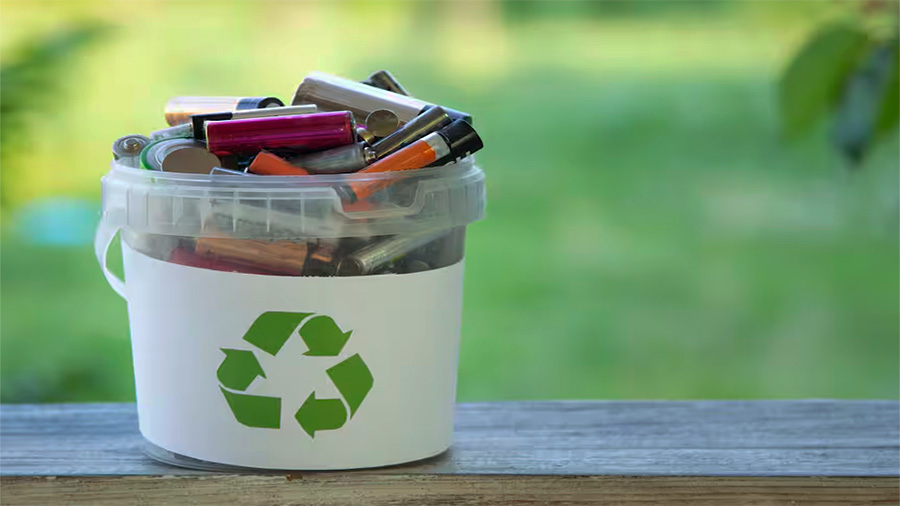The global pollution crisis has reached alarming levels, with plastics and metals playing a significant role in environmental degradation. From overflowing landfills and contaminated oceans to toxic emissions, the mismanagement of plastic and metal waste has severe consequences for ecosystems, wildlife, and human health. Despite their essential roles in modern life, the improper disposal of these materials highlights the urgent need for effective recycling strategies. This article explores how plastic and metal waste contribute to pollution and the importance of sustainable waste management to combat this escalating crisis.
How Plastic Waste Contributes to Global Pollution
Plastic pollution is one of the most pressing environmental challenges. Its widespread use, slow degradation, and improper disposal have resulted in long-term consequences for the planet. Plastics now account for a significant portion of global waste, and their impact spans terrestrial and marine ecosystems.
1. Non-Biodegradability of Plastics
Plastics are synthetic materials derived from fossil fuels. They are non-biodegradable, meaning they persist in the environment for hundreds of years. Instead of breaking down naturally, plastics fragment into microplastics, which contaminate soil, water, and air.
- Impact: Microplastics have infiltrated food chains, drinking water, and even the atmosphere, posing significant health risks to humans and animals.
Example: Studies show that over 8 million tons of plastic enter the oceans annually, where they harm marine life and ecosystems.
2. Ocean and Marine Pollution
Plastic waste, particularly single-use plastics, makes up a large portion of marine pollution. Improper disposal and weak waste management systems result in plastics entering rivers and oceans, where they accumulate in large gyres like the Great Pacific Garbage Patch.
- Impact on Marine Life: Marine animals mistake plastics for food or become entangled in debris, leading to injuries, starvation, and death.
Example: Over 100,000 marine mammals and 1 million seabirds die each year due to plastic ingestion or entanglement.
3. Landfill Overload and Soil Contamination
Plastic waste contributes to the overloading of landfills, where it occupies significant space and releases toxic chemicals as it degrades. Plastics can leach harmful substances like bisphenol A (BPA) and phthalates into the soil and groundwater.
- Example: In developing countries, unregulated landfills allow plastic waste to seep into water sources, contaminating local communities.
Landfills’ inability to manage growing plastic waste highlights the urgent need for sustainable alternatives and recycling solutions.

How Metal Waste Contributes to Global Pollution
While metals are durable and recyclable, their improper disposal and extraction processes contribute significantly to pollution. Metals such as aluminum, lead, and mercury create environmental and health hazards when not managed responsibly.
1. Environmental Impact of Mining and Extraction
Metal production begins with mining and extraction, which are highly resource-intensive processes. Mining activities cause deforestation, habitat destruction, and soil erosion, while metal smelting releases greenhouse gases and toxic emissions into the air.
- Example: Bauxite mining for aluminum production destroys ecosystems and contaminates water with red mud, a toxic byproduct.
The environmental costs of mining metals underscore the importance of recycling to reduce reliance on raw material extraction.
2. Electronic Waste and Toxic Metals
Electronic waste (e-waste) is a growing problem, containing metals such as lead, mercury, and cadmium. Improper disposal of e-waste leads to the release of toxic metals into the environment, contaminating soil, water, and air.
- Impact: Exposure to these metals can cause neurological damage, respiratory issues, and other health problems, particularly in communities near unregulated e-waste dumps.
Example: The United Nations estimates that over 50 million metric tons of e-waste are generated annually, much of which ends up in landfills.
3. Metal Waste in Landfills
Metals that are not recycled often end up in landfills, where they corrode and release pollutants. For example, heavy metals like lead and mercury can leach into soil and groundwater, contaminating water supplies and ecosystems.
- Example: Disposed batteries release lead and sulfuric acid, which harm aquatic life and pollute freshwater systems.
While metals are infinitely recyclable, the low recycling rates exacerbate their environmental impact.

The Urgent Need for Effective Recycling Strategies
Addressing the pollution crisis caused by plastics and metals requires robust recycling strategies and a commitment to sustainability. Recycling reduces waste, conserves resources, and minimizes environmental damage.
1. Plastic Recycling and Circular Economy
To combat plastic pollution, industries and governments must adopt circular economy models, where plastics are reused, recycled, or replaced with sustainable alternatives.
- Advanced Recycling Technologies: Innovations like chemical recycling break down plastics into their raw components for reuse.
- Reducing Single-Use Plastics: Bans on single-use plastics and incentives for reusable products promote sustainable consumption.
Example: The European Union’s plastic recycling targets aim to recycle 55% of plastic packaging by 2030.
2. Increasing Metal Recycling Rates
Metal recycling is one of the most effective ways to reduce environmental pollution. Recycling metals like aluminum, copper, and steel consumes far less energy than mining and processing raw materials.
- Energy Savings: Recycling aluminum saves up to 95% of the energy required for primary production.
- E-Waste Management: Proper e-waste recycling programs recover valuable metals and prevent toxic contamination.
Example: Countries like Japan have implemented e-waste recycling programs that recover rare earth metals, reducing the need for destructive mining.
3. Promoting Global Collaboration
Addressing plastic and metal pollution requires coordinated global efforts, including policies, education, and investments in recycling infrastructure:
- Government Policies: Extended Producer Responsibility (EPR) programs hold manufacturers accountable for the entire lifecycle of their products.
- Public Awareness: Campaigns encouraging recycling, waste reduction, and responsible consumption are vital for long-term change.
Global initiatives, such as the United Nations’ sustainable development goals (SDGs), aim to reduce pollution and promote environmental sustainability.
The Role of Individuals in Combating Pollution
Individuals play a crucial role in reducing plastic and metal waste through conscious actions and sustainable choices. Here are steps everyone can take:
- Reduce and Reuse: Minimize plastic use by opting for reusable products, like bags, bottles, and containers.
- Recycle Properly: Sort and dispose of plastics, metals, and e-waste in designated recycling bins to ensure proper processing.
- Support Sustainable Brands: Choose products made from recycled materials or companies committed to reducing their environmental footprint.
- Raise Awareness: Educate others about the importance of recycling and sustainable waste management.
By adopting these habits, individuals can contribute to reducing global pollution and fostering a healthier environment.
Conclusion
Plastic and metal waste are major contributors to the global pollution crisis, impacting ecosystems, human health, and natural resources. While plastics persist for centuries and infiltrate food chains, metals contribute to toxic contamination through mining and improper disposal. Effective recycling strategies, such as advanced technologies, circular economies, and global cooperation, are essential to mitigating these challenges. By promoting sustainable waste management and encouraging responsible consumption, both governments and individuals can play a vital role in addressing this environmental crisis and creating a cleaner, more sustainable future.

